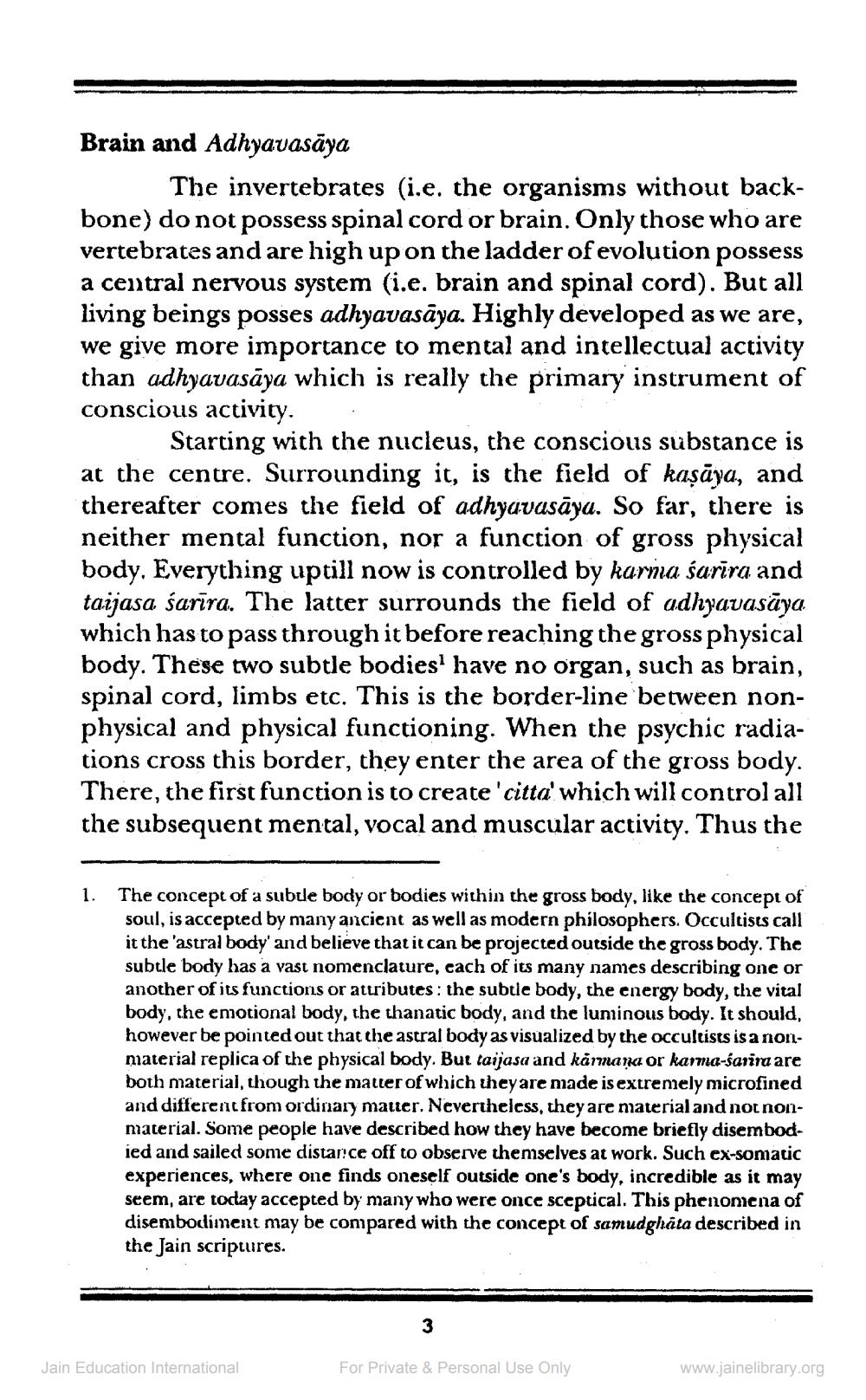________________
Brain and Adhyavasāya
The invertebrates (i.e. the organisms without backbone) do not possess spinal cord or brain. Only those who are vertebrates and are high up on the ladder of evolution possess a central nervous system (i.e. brain and spinal cord). But all living beings posses adhyavasāya. Highly developed as we are, we give more importance to mental and intellectual activity than adhyavasāya which is really the primary instrument of conscious activity.
Starting with the nucleus, the conscious substance is at the centre. Surrounding it, is the field of kaşāya, and thereafter comes the field of adhyavasāya. So far, there is neither mental function, nor a function of gross physical body. Everything uptill now is controlled by karma sarīra and taijasa sarīra. The latter surrounds the field of adhyavasāya which has to pass through it before reaching the gross physical body. These two subtle bodies' have no organ, such as brain, spinal cord, limbs etc. This is the border-line between nonphysical and physical functioning. When the psychic radiations cross this border, they enter the area of the gross body. There, the first function is to create'citta' which will control all the subsequent mental, vocal and muscular activity. Thus the
1
The concept of a subule body or bodies within the gross body, like the concept of soul, is accepted by many ancient as well as modern philosophers. Occultists call it the 'astral body' and believe that it can be projected outside the gross body. The subtle body has a vast nomenclature, cach of its many names describing one or another of its functions or attributes: the subtle body, the energy body, the vital body, the emotional body, the thanatic body, and the luminous body. It should, however be pointed out that the astral body as visualized by the occultists is a nonmaterial replica of the physical body. But taijasa and kärmana or karma-barira are both material, though the matter of which they are made is extremely microfined and different from ordinary matter. Nevertheless, they are material and not nonmaterial. Some people have described how they have become briefly disembodied and sailed some distance off to observe themselves at work. Such ex-somatic experiences, where one finds oneself outside one's body, incredible as it may scem, are today accepted by many who were once sceptical. This phenomena of disembodiment may be compared with the concept of samudghäta described in the Jain scriptures.
-**
Jain Education International
For Private & Personal Use Only
www.jainelibrary.org




